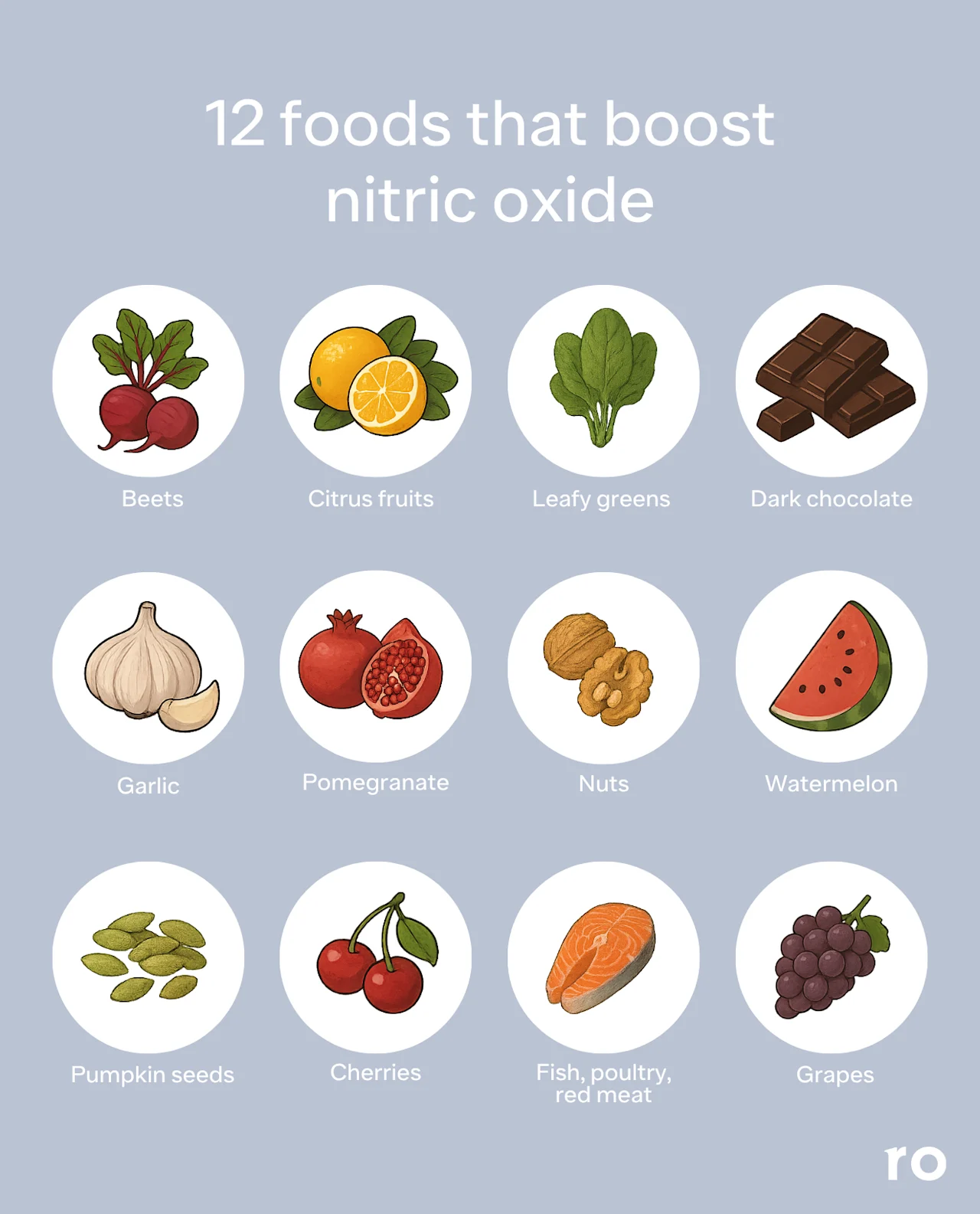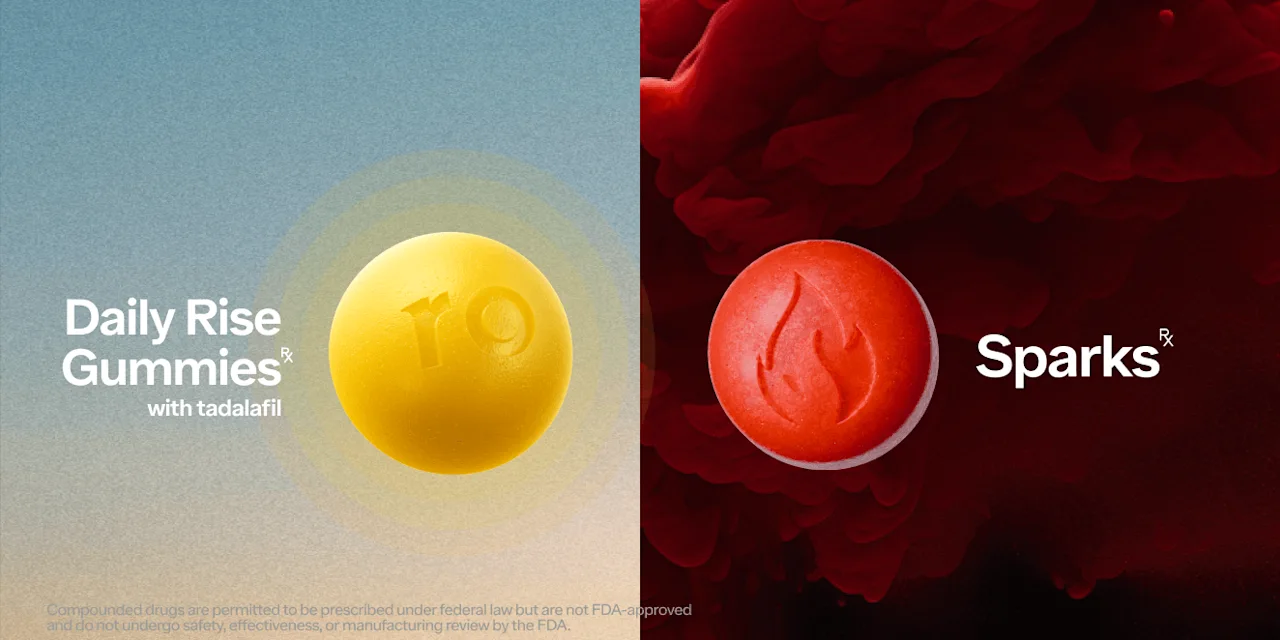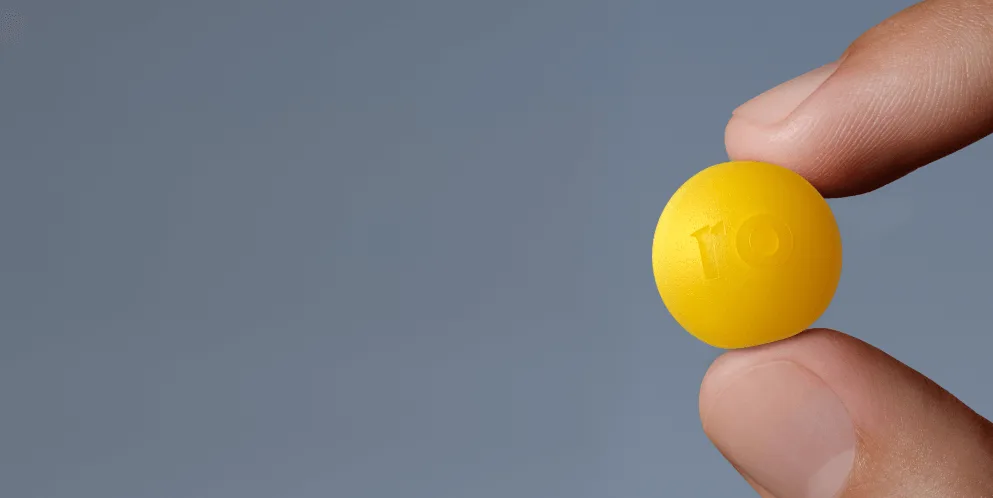Key takeaways
Nitric oxide is a gas that relaxes blood vessels, making it important for supporting heart health and healthy erections.
Low levels of nitric oxide can contribute to erectile dysfunction, but eating certain foods may help increase your body’s production.
Foods that support nitric oxide synthesis usually either contain compounds that convert to nitric oxide in the body or help protect nitric oxide and the pathways involved in its production. These foods include beets, citrus fruits, leafy vegetables, dark chocolate, and more.
There’s no single food that can cure ED, but eating foods that boost nitric oxide, along with healthy lifestyle habits and prescription medications, may help improve erectile issues.
Here's what we'll cover
Here's what we'll cover
Key takeaways
Nitric oxide is a gas that relaxes blood vessels, making it important for supporting heart health and healthy erections.
Low levels of nitric oxide can contribute to erectile dysfunction, but eating certain foods may help increase your body’s production.
Foods that support nitric oxide synthesis usually either contain compounds that convert to nitric oxide in the body or help protect nitric oxide and the pathways involved in its production. These foods include beets, citrus fruits, leafy vegetables, dark chocolate, and more.
There’s no single food that can cure ED, but eating foods that boost nitric oxide, along with healthy lifestyle habits and prescription medications, may help improve erectile issues.
When it comes to erectile dysfunction (ED) treatments, prescription medications are usually at the top of the list as they’re proven to be safe and effective for ED. And while that’s all well, you may be more interested in drug-free ways to improve sexual function. One possible approach? Eating more foods high in nitric oxide (NO), a molecule involved in healthy, long-lasting erections. After all, diet, along with other lifestyle habits, can play a key role in sexual function and wellbeing.
Now, just increasing your intake of nitric oxide foods won’t have the same effect as ED medications like Viagra and Cialis. But boosting the amount of certain items in your diet might help.
Here, learn about nitric oxide foods (i.e. those that promote the production of NO) for erectile dysfunction, plus how they might work for sexual performance.
Nitric oxide (NO) is a gas that consists of two atoms, nitrogen and oxygen. It’s naturally made by the body and plays a major role in bodily processes, including vasodilation or the widening of blood vessels. The widening effect can improve blood flow, thereby lowering blood pressure.
This can be beneficial for heart health, but it can be good for your sexual function, too. The reason? “Nitric oxide helps erectile dysfunction by relaxing the smooth muscle tissue of the corpora cavernosa in the penis, allowing for increased blood flow necessary for an erection,” says registered dietitian Jennifer Pallian, RD. There are reports that in cases of erectile dysfunction, lower levels of nitric oxide may be observed, stressing the importance of the gas.
Potential health benefits of nitric oxide foods
Eating foods that increase nitric oxide can have possible benefits for the body. It may:
Reduce blood pressure: Nitric oxide widens blood vessels, promoting healthy blood flow. When vessels are wider, the pressure of blood against their walls decreases, helping to lower blood pressure. This matters because high blood pressure is a major risk factor for heart disease, making lifelong management essential.
Support exercise performance: The vasodilating effect of nitric oxide can deliver more oxygen (via the blood) to your muscles. This can support athletic ability and decrease soreness after exercise, helping you recover faster. Some active people take supplements of compounds that support nitric oxide production, such as nitrates and L-arginine.
Improve erection issues: Nitric oxide is essential for healthy erections, as it relaxes blood vessels in the penis and promotes blood flow. Erectile dysfunction is often linked to reduced nitric oxide levels, so increasing nitric oxide production may help improve symptoms.
12 foods that boost nitric oxide
“Although foods don’t contain nitric oxide, some are rich in compounds that help the body produce it,” Pallian says. Others help protect nitric oxide or stimulate its production, ultimately supporting your overall levels.
These foods include:
Beets
Citrus fruits
Leafy green vegetables
Dark chocolate
Garlic
Pomegranate
Nuts
Watermelon
Pumpkin seeds
Montmorency cherries
Meat, poultry, and fish
Grapes

1. Beets
If you’ve got a pulse on workout trends, you’ve likely heard about beets and beet juice for boosting exercise performance. That’s because beets have been shown to increase blood flow, paving the way for a more efficient workout. But these benefits might also help you “beet” ED — no pun intended.
Beets are nitrate-rich vegetables; nitrate is a precursor to NO, so consuming beets may increase nitric oxide production, helping boost blood flow to the penis. For example, one study found that drinking beet juice can increase the excretion of nitric oxide metabolites, which could indicate the nitric oxide levels themselves were increased. In another small study of 38 adults, a beetroot juice supplement improved average values of nitric oxide by 21%. For ED specifically, these effects of beets and beet juice on nitric oxide may benefit erectile function, though this effect has not been demonstrated in research.
2. Citrus fruits
Citrus fruits — e.g oranges, grapefruits, lemons — are largely considered healthy thanks to their high content of vitamin C, an antioxidant and essential nutrient that supports a healthy immune system. But that’s not all; vitamin C can also increase the production of nitric oxide, which is needed to achieve erections. Vitamin C works can enhance cellular reactions needed to convert nitrates to nitric oxide, potentially helping ED.
Plus, citrus fruits are packed with antioxidants called flavonoids. A high intake of flavonoids has been associated with higher nitric oxide levels. That’s because flavonoids can support the activity of nitric oxide synthase, an enzyme that converts the amino acid L-arginine to nitric oxide. In fact, higher total intake of fruits in general have been linked to a 14% lower risk of ED, so consider adding more (citrus or otherwise) to your plate.
3. Leafy vegetables
When it comes to nitric oxide foods for erectile dysfunction, look no further than leafy green vegetables. Leafy greens like spinach, arugula, Swiss chard, and lettuce can increase nitric oxide levels, possibly improving ED. For starters, leafy greens are high in nitrates, which, again, are converted to nitric oxide in the body. Green leafy vegetables are also high in flavonoids, antioxidants that can promote the enzyme reactions involved in nitric oxide production.
4. Dark chocolate
Dark chocolate contains antioxidants called polyphenols, and the ones in dark chocolate activate nitric oxide synthase. As a reminder, nitric oxide synthase converts L-arginine into nitric oxide, thereby increasing nitric oxide levels.
What’s more, the polyphenols in dark chocolate decrease activation of NADPH oxidase, an enzyme that reduces nitric oxide via free radicals (i.e. harmful molecules). By pumping the brakes on NADPH oxidase, dark chocolate polyphenols can save nitric oxide, potentially increasing levels and easing erectile issues.
While more research is needed to explore the specific link between dark chocolate and ED, one small study of 32 people found that some levels of dark chocolate consumption can increase nitric oxide levels and even help with blood pressure overall.
5. Garlic
Garlic might also boost nitric oxide levels, though most of the available research involves animals. For example, in a study involving mice, aged garlic extract increased nitric oxide by activating certain types of nitric oxide synthase. A test tube study also found that aged garlic extract can play a role in preventing endothelial dysfunction, a condition wherein the lining of blood vessels doesn’t work properly that’s thought to contribute to ED. (FYI, endothelial dysfunction is a condition wherein the lining of blood vessels doesn’t work properly; it’s considered a precursor to cardiovascular disease, which is frequently linked with ED.)
It’s worth noting that taking aged garlic extract is different from consuming fresh garlic in a dish. More research is also needed to examine how garlic specifically affects nitric oxide levels and ED in humans.
6. Pomegranate
Pomegranates and pomegranate juice (one of the best drinks for ED) might help you achieve and maintain erections. They’re one of the best food sources of antioxidants, including polyphenols.
As mentioned, some polyphenols can boost the activity of nitric oxide synthase, helping the body make more nitric oxide. Pomegranates are also teeming with flavonoid antioxidants, which protect nitric oxide from oxidative stress — a process that can damage and reduce nitric oxide levels. Additionally, pomegranates also have a high nitrate content, which can increase nitric oxide in the body.
In a small study of 16 people, researchers examined the effect of pomegranate juice on human corpora cavernosa (i.e. type of erectile tissue). They found that pomegranate juice can stimulate activity of neuronal nitric oxide synthase and cause relaxation of human corpora cavernosa, which could help address ED. Another fairly small study of 53 people with mild-to-moderate ED found a link between pomegranate juice and improved ED, though larger studies are needed before making generalizable conclusions.
7. Nuts
If you’re looking for nitric oxide foods, consider adding nuts to your snacking lineup. Nuts, such as walnuts and almonds, are rich in L-arginine, a precursor to nitric oxide. In other words, eating more nuts can boost your intake of L-arginine, potentially supporting nitric oxide levels needed for healthy erections. Nuts also have an anti-inflammatory effect thanks to their high levels of L-arginine. This can benefit ED, as inflammation may make it difficult for nitric oxide synthase to work properly, which could increase the risk of erection issues.
8. Watermelon
A classic summer fruit, watermelon can increase your nitric oxide levels. It contains L-citrulline, an amino acid that is a precursor to L-arginine. L-arginine “is then used by nitric oxide synthase enzymes to produce nitric oxide,” Pallian says.
Watermelon is rich in lycopene, too. Lycopene is an antioxidant, meaning it can fight oxidative stress. According to a population-based study, lower intakes of lycopene are linked to a higher risk of ED. Researchers are still learning about the association, but it’s thought to be related to lycopene’s ability to fight oxidative stress, a process that can contribute to ED.
9. Pumpkin seeds
Pumpkin seeds offer magnesium, a mineral that supports nitric oxide synthase, the enzyme that converts L-arginine to nitric oxide. Magnesium also has anti-inflammatory properties, which provide multiple benefits for ED. That’s because inflammation can hinder nitric oxide synthase, potentially reducing the production of nitric oxide (and, therefore, healthy erections). Inflammation can also damage blood vessels, leading to poor blood flow and erection issues. However, magnesium may help by reducing this inflammation.
What’s more, pumpkin seeds contain L-arginine, the amino acid that serves as a precursor to nitric oxide. Eating more pumpkin seeds may increase the amount of L-arginine in your body, which could boost your overall nitric oxide levels.
10. Cherries
Another food that may increase your nitric oxide levels is Montmorency cherries. Like dark chocolate, the fruit is teeming with polyphenols, a type of antioxidant that decreases inflammation. This can benefit nitric oxide production by protecting nitric oxide synthase and keeping blood vessels healthy, which are key factors for achieving and maintaining erections.
Also, in a small study of 15 men with early hypertension (high blood pressure), Montmorency tart cherry juice has been shown to lower systolic blood pressure (SBP). This is the top or first number in a blood pressure reading, and it indicates the force of blood in your arteries when your heart beats. This is noteworthy because, compared to DBP, SBP is a better predictor of heart disease, which can increase the risk of erection issues.
According to the researchers in the aforementioned study, the SBP-lowering effect is due to polyphenols in Montmorency cherries. The polyphenols work by supporting the activity of nitric oxide synthase, helping the body make more nitric oxide. The polyphenols also suppress NADPH oxidase, which would otherwise reduce nitric oxide availability.
11. Meat, poultry, fish
L-arginine is found in red meat (e.g. beef, pork), poultry (e.g. chicken, turkey), and fish (e.g. salmon, tuna). To recap, L-arginine is a precursor of nitric oxide, meaning it turns into nitric oxide in the body. This means eating meat, poultry, and fish can increase your levels of L-arginine, which can then be converted to nitric oxide. The catch? A high intake of red meat, especially processed versions, is high in saturated fat. And a high intake of this type of fat can increase the risk of heart disease, a risk factor for erectile dysfunction. Therefore, it’s important to be mindful of your intake of red meat.
12. Grapes
“Grapes — particularly purple grapes — contain polyphenols, especially flavonoids, which can enhance nitric oxide production,” Pallian says. Polyphenols also fight oxidative stress, which, again, can contribute to ED over time by damaging blood vessels. Additionally, purple grape juice has been shown to improve nitric oxide bioavailability. This is likely due to their high flavonoid content, Pallian explains.
Alternatives to nitric oxide foods for ED
While it doesn’t hurt to eat foods rich in nitric oxide (or rather, foods that increase nitric oxide synthesis), there are evidence-backed treatments for ED that have been proven to be safe and effective. These include:
Trying prescription medications. If you’re dealing with ED, it’s important to consult a healthcare provider, as they’re the most qualified to determine what might be causing your erectile issues and how to best address them. One treatment option they might suggest? Prescription medications, specifically phosphodiesterase type 5 (PDE5) inhibitors. PDE5 inhibitors — e.g. Viagra (sildenafil), Cialis (tadalafil), Stendra (avanafil), and vardenafil — are oral pills that work in part by increasing blood flow to the penis, which promote stronger, longer-lasting erections. (Yes, similar to nitric oxide.)
Some PDE5 inhibitors can also be found in other forms. Ro Sparks, for example, combines tadalafil and sildenafil in a sublingual treatment that dissolves under your tongue for fast-acting results. Another example is Ro’s Daily Rise Gummies, which feature tadalafil in each fruit-flavored gummy.
Eat a balanced diet. To reduce your risk of ED, eat plenty of vegetables, fruits, fish, nuts, and legumes. These foods are linked to lower chances of developing ED, according to research. Likewise, limiting or avoiding certain items such as sugar-sweetened drinks, red and processed meats, and foods high in trans fatty acids and sodium can help prevent erectile issues.
Manage your mental health. Stress, anxiety, and depression can all increase the risk of ED, so taking care of your mental health can help down-there difficulties (as well as promote overall wellbeing). This may include practicing stress management techniques, such as journaling and meditation.
Depending on the severity of your mental health challenges and/or erectile function, you might also want to speak to a mental health therapist. Such an expert can help you develop a better understanding of your emotional and mental wellbeing as well as potentially suggest additional treatment options, such as antidepressants or anti-anxiety medications, if appropriate. Keep in mind, though, that certain antidepressants can also worsen or contribute to ED, so it’s important to keep your healthcare provider updated on your responses to treatment and have an informed discussion about the risks and benefits of medication.
Exercise regularly. Physical activity can improve the production of nitric oxide, which is needed for healthy erections. It can also support hormonal and cardiovascular health — both of which play key roles in erectile wellbeing and function. The general recommendation for exercise is 150–300 minutes of moderate-intensity activity (or 75–150 minutes of vigorous-intensity activity) each week, plus strength training at least twice a week. Oh, and need not forget that getting ample movement can also benefit your mental health and sleep, which brings us to…
Get enough sleep. Poor sleep can reduce testosterone, a hormone involved in erectile function. The adequate sleep duration is considered to be 7–9 hours per night, while poor sleep is defined as six or fewer hours per night. Plus, getting enough shut-eye can reduce the risk of cardiovascular disease, a risk factor for ED.
Bottom line
There’s no one bite or beverage that will cure ED. But eating plenty of foods high in nitric oxide may help reduce your risk of developing ED, and, if you already have ED, may help address the condition over time. Here’s what to keep in mind when packing your plate for your, well, penis. (Say that five times fast!)
Nitric oxide has several potential health benefits. Nitric oxide widens, or relaxes, blood vessels, which encourages better blood flow. This can reduce blood pressure and improve heart health, which can benefit exercise performance and ED.
Certain foods can support nitric oxide synthesis. Though you can’t find nitric oxide in food, you can consume foods that help your body make nitric oxide. This includes beets, citrus fruits, leafy vegetables, dark chocolate, garlic, pomegranate, nuts, pumpkin seeds, meat, fish, poultry, Montmorency cherries, and watermelon.
There are more effective treatments for ED. If you’re having trouble getting or maintaining erections, be sure to explore all your options. This may include eating foods that support nitric oxide, as well as exercising regularly, getting enough sleep, caring for your mental health, and eating an overall balanced diet. A healthcare provider can also determine what may be causing ED and whether prescription medication might help you.
Frequently asked questions (FAQs)
What food is highest in nitric oxide?
Though nitric oxide itself isn’t found in food, you can eat foods that contain compounds that turn into nitric oxide, like nitrate. One of the highest sources of nitrate is spinach, but other leafy greens and root vegetables (like beets) are rich sources too.
What is the fastest way to increase nitric oxide?
To date, there’s no research that identifies the quickest method to increase nitric oxide. However, you can naturally increase your body’s production by eating foods such as beets, leafy greens, citrus fruits, and more.
How can you tell if you need more nitric oxide?
There’s no test that measures nitric oxide in the blood. But issues like fatigue, high blood pressure, and erectile dysfunction may indicate reduced nitric oxide levels.
Can you have too much nitric oxide?
There’s no research indicating excessively high nitric oxide levels due to eating certain foods. With this in mind, it’s always important to eat a variety of foods. However, it's possible to overdose on supplements that encourage nitric oxide synthesis. This includes L-citrulline and L-arginine , which can cause hypotension (low blood pressure) in high amounts.
DISCLAIMER
If you have any medical questions or concerns, please talk to your healthcare provider. The articles on Health Guide are underpinned by peer-reviewed research and information drawn from medical societies and governmental agencies. However, they are not a substitute for professional medical advice, diagnosis, or treatment.
Viagra Important Safety Information: Read more about serious warnings and safety info.
Cialis Important Safety Information: Read more about serious warnings and safety info.
Addi M., Elbouzidi A., & Abid M., et al. (2022). An overview of bioactive flavonoids from Citrus fruits. Applied Sciences, 12(1),29. doi: 10.3390/app12010029. Retrieved from https://www.mdpi.com/2076-3417/12/1/29
Andrabi, S. M., Sharma, N. S., Karan, A., et al. (2023). Nitric oxide: Physiological functions, delivery, and biomedical applications. Advanced Science (Weinheim, Baden-Wurttemberg, Germany), 10(30), e2303259. doi: 10.1002/advs.202303259. Retrieved from https://www.ncbi.nlm.nih.gov/pmc/articles/PMC10602574/
Almannai, M., & El-Hattab, A. W. (2021). Nitric oxide deficiency in mitochondrial disorders: The utility of arginine and citrulline. Frontiers in Molecular Neuroscience, 14, 682780. doi: 10.3389/fnmol.2021.682780. Retrieved from https://pubmed.ncbi.nlm.nih.gov/34421535/
Baião, D. dos S., Conte-Junior, C. A., & Paschoalin, V. M. F., et al. (2015). Beetroot juice increase nitric oxide metabolites in both men and women regardless of body mass. International Journal of Food Sciences and Nutrition, 67(1), 40–46. doi: 10.3109/09637486.2015.1121469. Retrieved from https://www.tandfonline.com/doi/full/10.3109/09637486.2015.1121469
Basaqr, R., Skleres, M., & Jayswal, R., et al. (2021). The effect of dietary nitrate and vitamin C on endothelial function, oxidative stress and blood lipids in untreated hypercholesterolemic subjects: A randomized double-blind crossover study. Clinical Nutrition, 40(4), 1851-1860. doi: 10.1016/j.clnu.2020.10.012. Retrieved from https://www.clinicalnutritionjournal.com/article/S0261-5614(20)30540-9/fulltext
Burnett A. L. (2006). The role of nitric oxide in erectile dysfunction: implications for medical therapy. Journal of Clinical Hypertension (Greenwich, Conn.), 8(12 Suppl 4), 53–62. Doi: 10.1111/j.1524-6175.2006.06026.x. Retrieved from https://pmc.ncbi.nlm.nih.gov/articles/PMC8109295/
Cassidy, A., Franz, M., & Rimm, E. B. (2016). Dietary flavonoid intake and incidence of erectile dysfunction. The American Journal of Clinical Nutrition, 103(2), 534–541. doi: 10.3945/ajcn.115.122010. Retrieved from https://www.ncbi.nlm.nih.gov/pmc/articles/PMC4733263/
da Silva, G. M., da Silva, M. C., Nascimento, D. V. G., et al. (2021). Nitric oxide as a central molecule in hypertension: Focus on the vasorelaxant activity of new nitric oxide donors. Biology, 10(10), 1041. Doi: 10.3390/biology10101041. Retrieved from https://www.mdpi.com/2079-7737/10/10/1041
Fedele, G., Castiglioni, S., Trapani, V., et al.. (2024). Impact of inducible nitric oxide synthase activation on endothelial behavior under magnesium deficiency. Nutrients, 16(10), 1406. doi: 10.3390/nu16101406. Retrieved from https://www.mdpi.com/2072-6643/16/10/1406
Forest C. P., Padma-Nathan, H., & Liker, H. R. (2007). Efficacy and safety of pomegranate juice on improvement of erectile dysfunction in male patients with mild to moderate erectile dysfunction: a randomized, placebo-controlled, double-blind, crossover study. International Journal of Impotence Research, 19, 564-567. doi: 10.1038/sj.ijir.3901570. Retrieved from https://www.nature.com/articles/3901570
Gao, Y., Liu, C., Lu, X., et al. (2024). Lycopene intake and the risk of erectile dysfunction in US adults: NHANES 2001-2004. Andrology, 12(1), 45–55. doi: 10.1111/andr.13439. Retrieved from https://pubmed.ncbi.nlm.nih.gov/37038051/
Gur, S., Rezk, B. M., Abd Elmageed, Z. Y., et al. (2016). Characterisation of pomegranate juice effects on human corpus cavernosum. Andrologia, 49, e12712. doi: 10.1111/and.12712. Retrieved from https://onlinelibrary.wiley.com/doi/10.1111/and.12712
Ignarro, L. J., Byrns, R. E., Sumi, D., et al. (2006). Pomegranate juice protects nitric oxide against oxidative destruction and enhances the biological actions of nitric oxide. Nitric Oxide: Biology and Chemistry, 15(2), 93–102. doi: 10.1016/j.niox.2006.03.00. Retrieved from https://pubmed.ncbi.nlm.nih.gov/16626982/
Jones, A. M., Thompson, C., Wylie, L. J., & Vanhatalo, A. (2018). Dietary nitrate and physical performance. Annual Review of Nutrition, 38, 303–328. doi: 10.1146/annurev-nutr-082117-051622. Retrieved from https://pubmed.ncbi.nlm.nih.gov/30130468/
Keane, K. M., George, T. W., Constantinou, C. L., et al. (2016). Effects of Montmorency tart cherry (Prunus Cerasus L.) consumption on vascular function in men with early hypertension. The American Journal of Clinical Nutrition, 103(6), 1531–1539. doi: 10.3945/ajcn.115.123869. Retrieved from https://pmc.ncbi.nlm.nih.gov/articles/PMC1124431/
Kiani, A. K., Bonetti, G., Medori, M. C., et al. (2022). Dietary supplements for improving nitric-oxide synthesis. Journal of Preventive Medicine and Hygiene, 63(2 Suppl 3), E239–E245. Doi: 10.15167/2421-4248/jpmh2022.63.2S3.2766. Retrieved from https://pmc.ncbi.nlm.nih.gov/articles/PMC9710401/
Koolwal, A., Manohar, J. S, Rao, T. S. S., et al. (2019). L-arginine and erectile dysfunction. Journal of Psychosexual Health, 1(1), 37-43. doi: 10.1177/2631831818822018. Retrieved from https://journals.sagepub.com/doi/10.1177/2631831818822018
Kroll, J. L., Werchan, C. A., & Rosenfield, D., et al. (2018). Acute ingestion of beetroot juice increases exhaled nitric oxide in healthy individuals. PloS One, 13(1), e0191030. doi: 10.1371/journal.pone.0191030 Retrieved from https://www.ncbi.nlm.nih.gov/pmc/articles/PMC5784918/
Li, M., Yun, W., Wang, G., et al. (2022). Roles and mechanisms of garlic and its extracts on atherosclerosis: A review. Frontiers in Pharmacology, 13, 954938. doi: 10.3389/fphar.2022.954938. Retrieved from https://pubmed.ncbi.nlm.nih.gov/36263122/
Little, P. J., Askew, C. D., Xu, S., & Kamato, D. (2021). Endothelial Dysfunction and Cardiovascular Disease: History and Analysis of the Clinical Utility of the Relationship. Biomedicines, 9(6), 699. doi: 10.3390/biomedicines9060699. Retrieved from https://www.mdpi.com/2227-9059/9/6/699
Lorin, J., Zeller, M., Guilland, J. C., et al. (2014). Arginine and nitric oxide synthase: regulatory mechanisms and cardiovascular aspects. Molecular Nutrition & Food Research, 58(1), 101–116. doi: 10.1002/mnfr.201300033. Retrieved from https://pubmed.ncbi.nlm.nih.gov/23740826/
Lu, Y., Kang, J., Li, Z. et al. (2021). The association between plant-based diet and erectile dysfunction in Chinese men. Basic and Clinical Andrology, 31, 11. doi: 10.1186/s12610-021-00129-5. Retrieved from https://bacandrology.biomedcentral.com/articles/10.1186/s12610-021-00129-5#citeas
Magrone, T., Russo, M. A., & Jirillo, E. (2017). Cocoa and dark chocolate polyphenols: From biology to clinical applications. Frontiers In Immunology, 8, 677. doi: 10.3389/fimmu.2017.00677. Retrieved from https://www.ncbi.nlm.nih.gov/pmc/articles/PMC5465250/
Miranda Neto, M., Toscano, L. L. T., Tavares, R. L., et al. (2020). Whole purple grape juice increases nitric oxide production after training session in high level beach handball athletes. Anais da Academia Brasileira de Ciencias, 92(4), e20191371. doi: 10.1590/0001-3765202020191371. Retrieved from https://pubmed.ncbi.nlm.nih.gov/33206786/
Morihara, N., Sumioka, I., Moriguchi, T., et al. (2002). Aged garlic extract enhances production of nitric oxide. Life Sciences, 71(5), 509-517. doi: 10.1016/S0024-3205(02)01706-X. Retrieved from https://www.sciencedirect.com/science/article/abs/pii/S002432050201706X?via%3Dihub
Rashid, J., Kumar, S. S., Job, K. M., et al. (2020). Therapeutic potential of citrulline as an arginine Supplement: A clinical pharmacology review. Paediatric Drugs, 22(3), 279–293. doi: 10.1007/s40272-020-00384-5. Retrieved from https://pmc.ncbi.nlm.nih.gov/articles/PMC7274894/
Salas-Salvadó, J., Casas-Agustench, P., Murphy, M. M., et al. (2008). The effect of nuts on inflammation. Asia Pacific Journal of Clinical Nutrition, 17(1), 333–336. Retrieved from https://pubmed.ncbi.nlm.nih.gov/18296371/
Smeets, E. T. H. C., Mensink, R. P., & Joris, P. J. (2021). Effects of L-citrulline supplementation and watermelon consumption on longer-term and postprandial vascular function and cardiometabolic risk markers: A meta-analysis of randomized controlled trials in adults. The British Journal of Nutrition, 128(9), 1–34. Advance online publication. doi: 10.1017/S0007114521004803. Retrieved from https://pmc.ncbi.nlm.nih.gov/articles/PMC9592950/
Sudarma, V., Sukmaniah, S., & Siregar, P. (2011). Effect of dark chocolate on nitric oxide serum levels and blood pressure in prehypertension subjects. Acta Medica Indonesiana, 43(4), 224–228. Retrieved from https://pubmed.ncbi.nlm.nih.gov/22156352/
Sweazea, K. L., Johnston, C. S., Miller, B., et al. (2018). Nitrate-rich fruit and vegetable supplement reduces blood pressure in normotensive healthy young males without significantly altering flow-mediated vasodilation: A randomized, double-blinded, controlled trial. Journal of Nutrition and Metabolism, 2018, 1729653. doi: 10.1155/2018/1729653. Retrieved from https://www.ncbi.nlm.nih.gov/pmc/articles/PMC6165613/
Roelofs, E. J., Smith-Ryan, A. E., Trexler, E. T., et al. (2017). Effects of pomegranate extract on blood flow and vessel diameter after high-intensity exercise in young, healthy adults. European Journal of Sport Science, 17(3), 317–325. doi: 10.1080/17461391.2016.1230892. Retrieved from https://www.ncbi.nlm.nih.gov/pmc/articles/PMC5563971/
Ros, E., Tapsell, L.C., & Sabaté, J. (2010). Nuts and berries for heart health. Current Atherosclerosis Reports, 12, 397-406. doi: 10.1007/s11883-010-0132-5. Retrieved from https://link.springer.com/article/10.1007/s11883-010-0132-5
Ruan, Z., Xie, X., Yu, H., et al. (2022). Association between dietary inflammation and erectile dysfunction among US adults: A cross-sectional analysis of the National Health and Nutrition Examination Survey 2001–2004. Frontiers in Nutrition, 9, 930272. doi: 10.3389/fnut.2022.930272. Retrieved from https://www.frontiersin.org/journals/nutrition/articles/10.3389/fnut.2022.930272/full#h13
Waheed Janabi, A. H., Kamboh, A. A., Saeed, M., et al. (2020). Flavonoid-rich foods (FRF): A promising nutraceutical approach against lifespan-shortening diseases. Iranian Journal of Basic Medical Sciences, 23(2), 140–153. doi: 10.22038/IJBMS.2019.35125.8353. Retrieved from https://www.ncbi.nlm.nih.gov/pmc/articles/PMC7211351/
Weiss, N., Papatheodorou, L., Morihara, N., et al. (2013). Aged garlic extract restores nitric oxide bioavailability in cultured human endothelial cells even under conditions of homocysteine elevation. Journal of Ethnopharmacology, 145(1), 162-167. doi: 10.1016/j.jep.2012.10.045. Retrieved from https://www.sciencedirect.com/science/article/abs/pii/S0378874112007428
Zhang, X., Li, Y., Del Gobbo, L. C., et al. (2016). Effects of magnesium supplementation on blood pressure: A meta-analysis of randomized double-blind placebo-controlled trials. Hypertension (Dallas, Tex. : 1979), 68(2), 324–333. doi: 10.1161/HYPERTENSIONAHA.116.07664. Retrieved from https://www.ahajournals.org/doi/10.1161/hypertensionaha.116.07664













